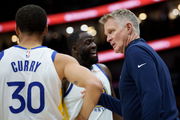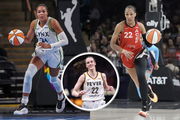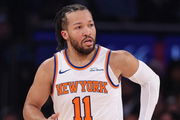

Prime Video has been steadily expanding its sports portfolio, from Thursday Night Football to exclusive NBA games in international markets. Now, it’s making a significant move into NASCAR, bringing the high-speed action of stock car racing to its streaming platform. With the Coca-Cola 600, Prime Video aired its first-ever NASCAR race, marking a historic shift from traditional cable to streaming.
Watch What’s Trending Now!
This transition isn’t just about changing channels; it’s about reaching new audiences and adapting to modern viewing habits. As NASCAR embraces this digital evolution, the question arises: How will this partnership reshape the future of motorsports broadcasting? Well, as per data, Prime Video has got a good start!
ADVERTISEMENT
NASCAR’s streaming debut on Prime Video delivers encouraging metrics
NASCAR’s inaugural foray into exclusive streaming with Prime Video has yielded promising results, particularly in attracting a younger demographic. The Coca-Cola 600, streamed exclusively on Prime Video, averaged 2.72 million viewers, with a peak audience of 2.92 million viewers at the race’s midpoint and right before tipoff of the Knicks-Pacers [Eastern Conference Finals] game.
A significant highlight from the broadcast was the median viewer age, which was over six years younger than NASCAR’s traditional linear TV audience. This shift aligns with NASCAR’s strategic objective to diversify its media platforms and engage younger fans. Brian Herbst, NASCAR’s Executive Vice President and Chief Revenue Officer, noted that the 18-34 demographic saw a 55% year-over-year increase, while the 18-49 group experienced a 20% rise.
Top Stories
LeBron James Drops Retirement Hint as He Shuts Down Claims of All-Time Record

Paige Bueckers Gives a Peek Into Her Minnesota Christmas Away From WNBA

Draymond Green Breaks Silence on Heated Steve Kerr Moment Leading to Exit From Warriors-Magic

WNBA Expansion Draft: Predicting 5 Players Every Team Will Protect

Knicks Exploring Ways to Cut Ties With $5.5M Player, Putting Fan Favorite at Risk -Insider

“In [adults] 18-34 and 18-49 and 25-54, those numbers being the highest that we’ve seen essentially for any non-broadcast race, that was really encouraging for us,” Herbst said. “And then the other piece that was just kind of unique: Looking at quarter hours for the sport over the last seven or eight years for me, we usually don’t have much competition from the NBA, in particular, on linear broadcast. But we did with this younger audience. … So what that showed to me is that with a little bit younger audience, there might be a little bit more overlap.”
ADVERTISEMENT
“It exceeded our internal expectations,” Herbst added. Well, attracting the younger audience with Prime was all part of the plan for NASCAR when it signed the $7.7 billion new media rights deals with Amazon and others in 2023. “We wanted diversification across broadcast, cable, and then a pure streamer with Amazon,” Herbst explained.
.@PrimeVideo ratings data indicated that @NASCAR on that platform gets competition from the @NBA in a way it usually doesn’t on regular TV, “so what that showed to me is that with a little bit younger audience, there might be a little bit more overlap.” https://t.co/I7f563izh0
— Adam Stern (@A_S12) June 6, 2025
ADVERTISEMENT
The integration of Nielsen’s “Big Data” measurement, combining traditional panel data with third-party metrics, further amplified the positive outlook. This approach revealed a 5% increase in viewership compared to traditional panel-only data, underscoring the potential of comprehensive analytics in understanding audience behavior.
However, the transition to streaming was not without its challenges. The overall audience saw a 16% decline from the previous year, primarily due to a decrease in viewers aged 55 and above. Numbers-wise, this translates to losing 730,000 viewers among adults 55+ vs. the 147,000 gained among the 18-54 age range. The gains in younger demographics suggest a successful step toward rejuvenating NASCAR’s fan base.
As NASCAR continues its partnership with Prime Video, the initial success of the Coca-Cola 600 indicates a promising future for the sport in the digital streaming landscape. The ability to attract a younger audience while leveraging advanced data analytics positions NASCAR well for sustained growth and relevance in an evolving media environment.
ADVERTISEMENT
Prime Video’s tech-savvy NASCAR broadcasts captivate younger audiences
Prime Video’s NASCAR debut wasn’t just about streaming races—it was about redefining how fans experience them. With over 70 cameras, including in-car and drone footage, and up to 10 miles of fiber optic cable, viewers were treated to immersive angles and high-definition visuals.
The broadcasts featured 1080p HDR video and Dolby 5.1 Surround Sound, delivering vivid colors and rich audio that brought the race to life. A standout feature was the double-box commercial format, allowing fans to continue watching the race while ads played in a smaller window. For those joining late, the Rapid Recap feature provided a two-minute highlight reel, ensuring viewers were quickly up to speed. Additionally, ultra-low-latency streaming technology, developed with AWS, minimized delays and kept the action in sync.
ADVERTISEMENT
These technological enhancements resonated with younger audiences. The Coca-Cola 600 broadcast on Prime Video attracted 800,000 viewers in the 18–49 demographic, surpassing any NASCAR cable race in the past three years. The median viewer age was 55.8 years, over six years younger than traditional NASCAR broadcasts.
But perhaps the most immersive edge comes even before the green flag. As Dale Earnhardt Jr. pointed out, Prime Video offers something that traditional networks like FOX simply can’t. “The stream is up—if you click the thumbnail on Amazon Prime, it puts you in the racetrack: the garage, cameras roaming around, showing you what’s going on. You’re literally seeing everything that’s happening.” It’s a behind-the-scenes pass, accessible instantly, giving fans a direct, real-time look into the heartbeat of race day.
By integrating advanced technology and user-friendly features, Prime Video has not only modernized NASCAR broadcasts but also expanded its appeal to a younger, tech-savvy audience. This approach could set a new standard for sports streaming, blending tradition with innovation.
ADVERTISEMENT
ADVERTISEMENT
ADVERTISEMENT
ADVERTISEMENT

